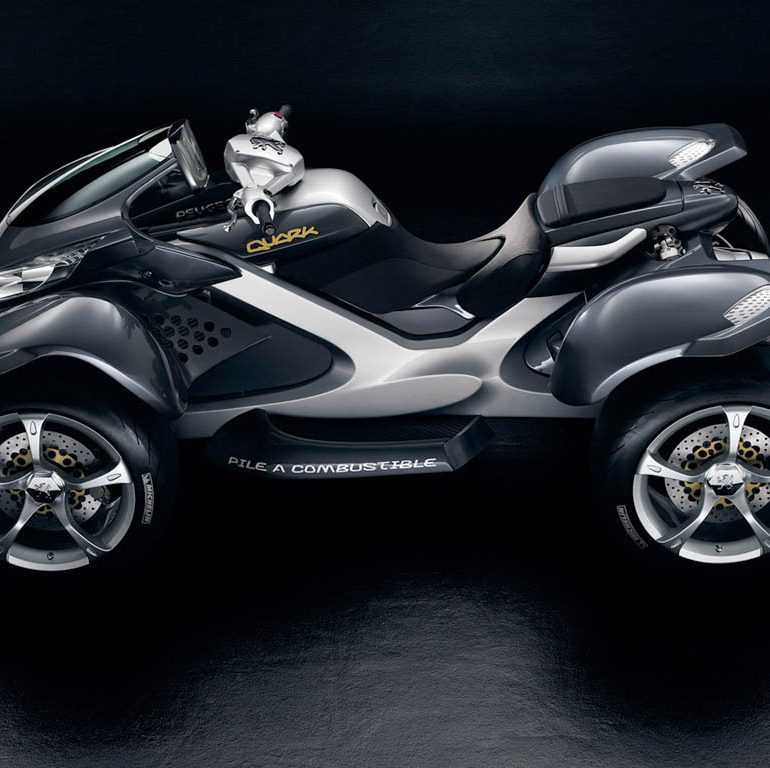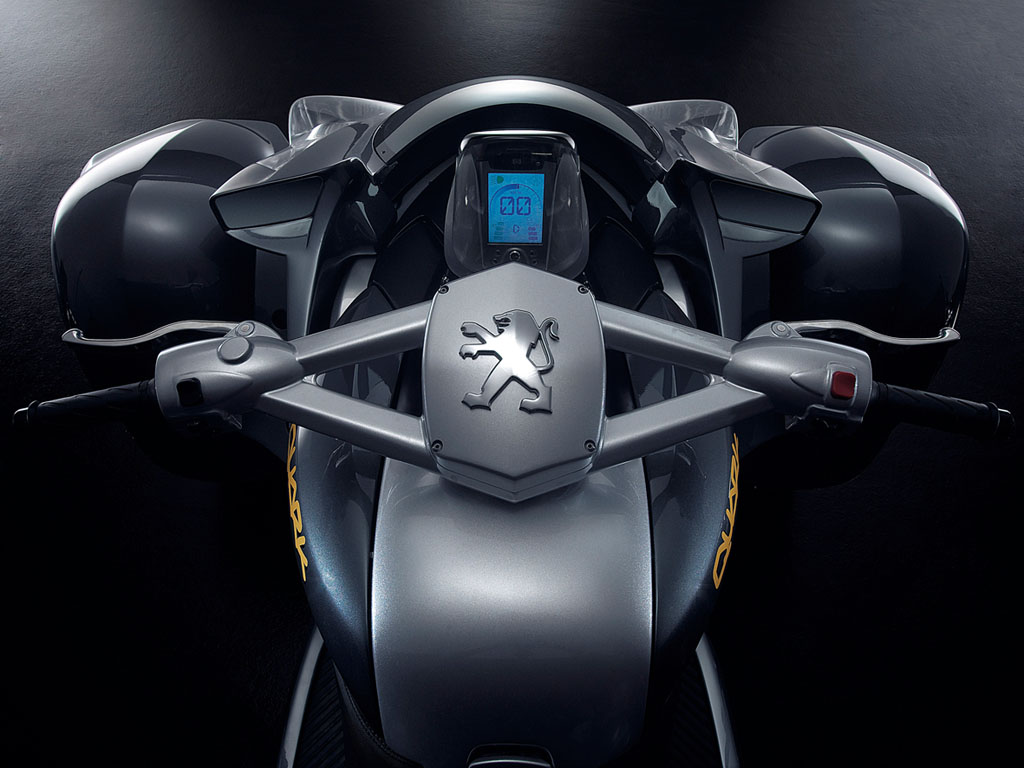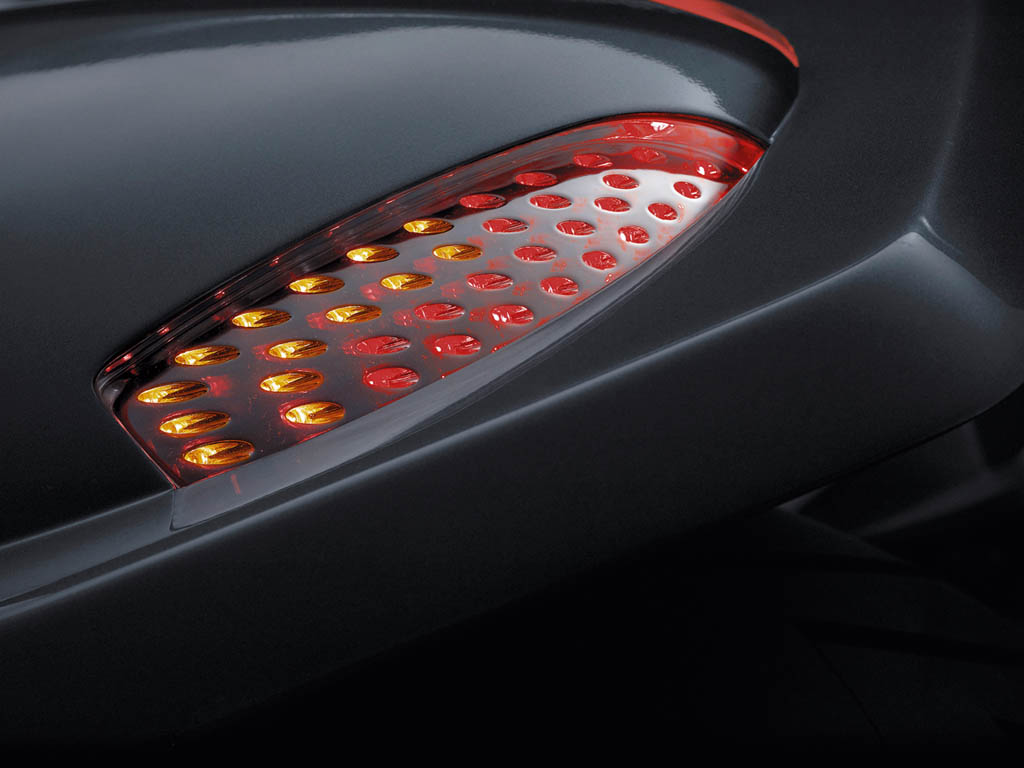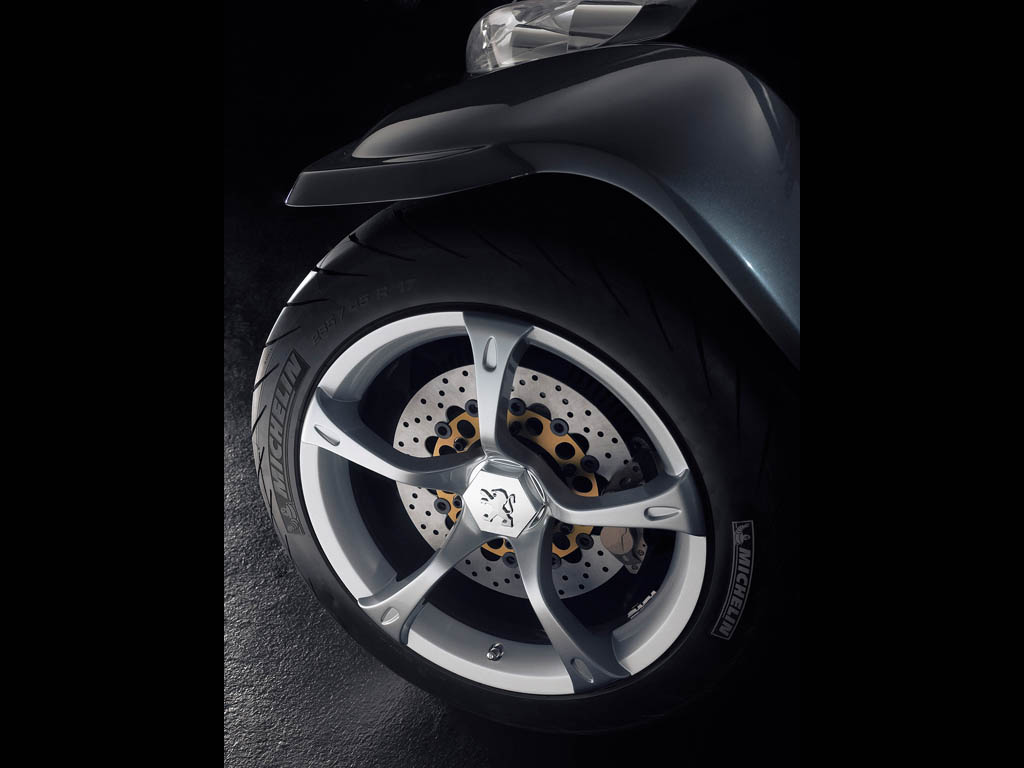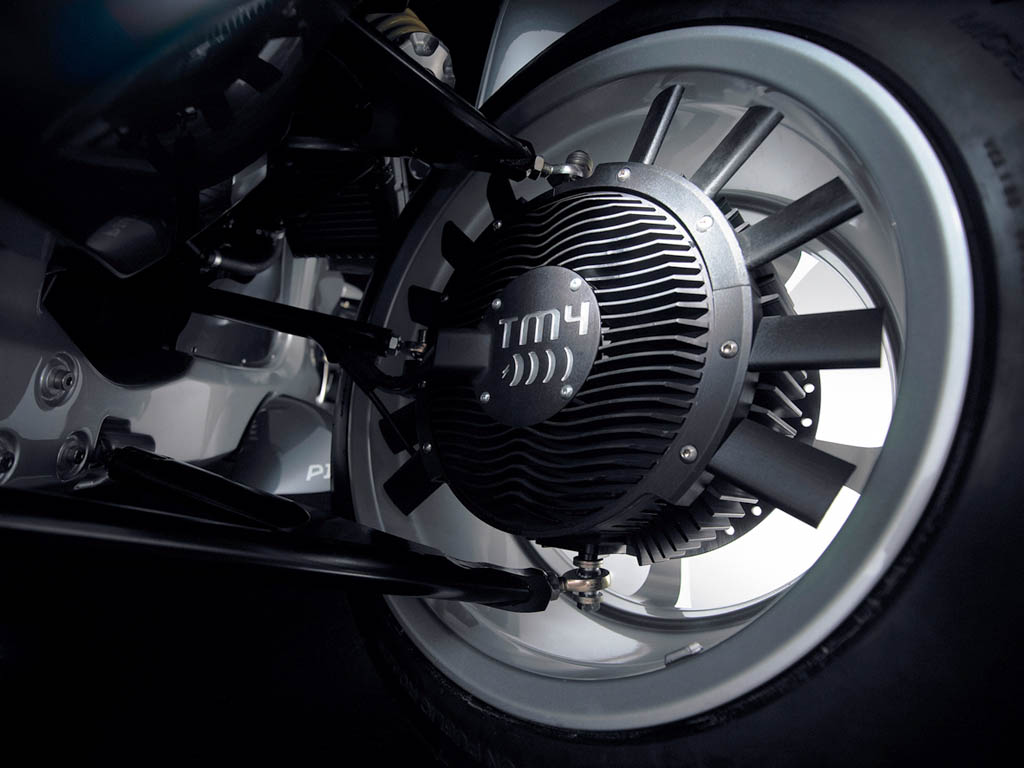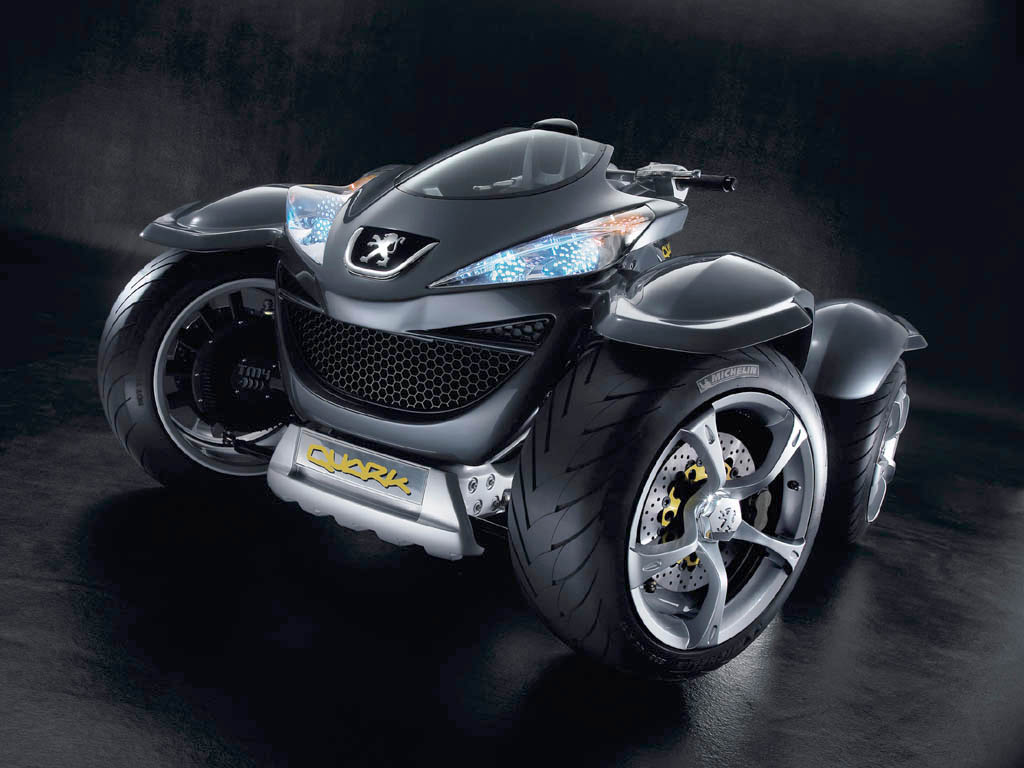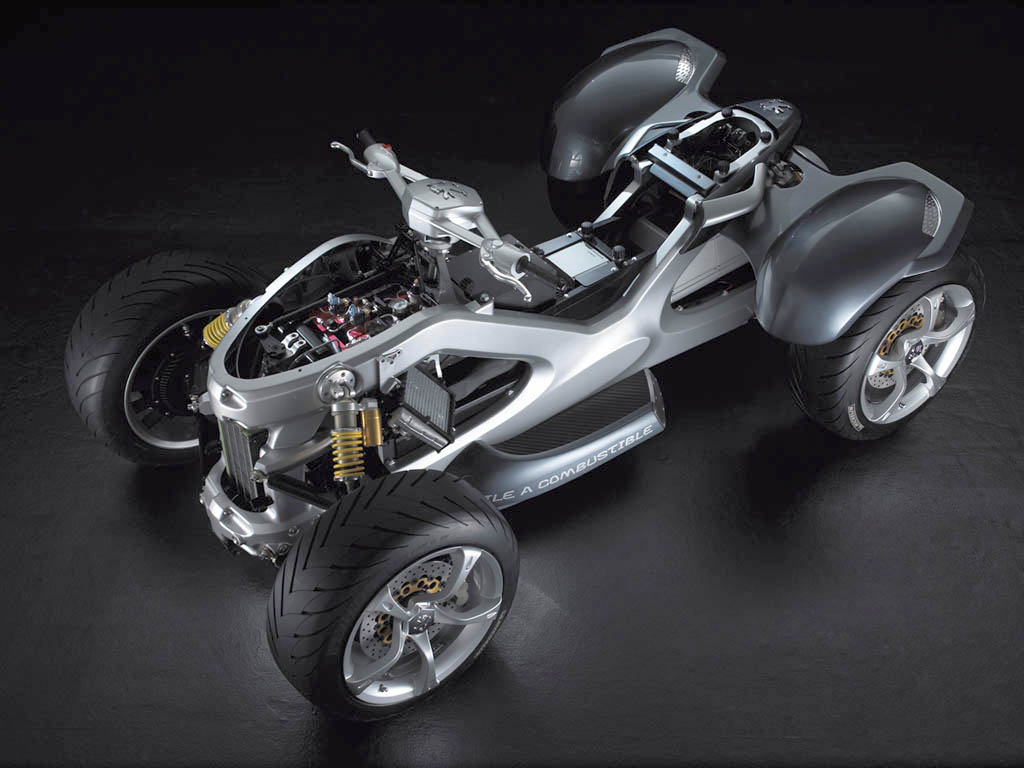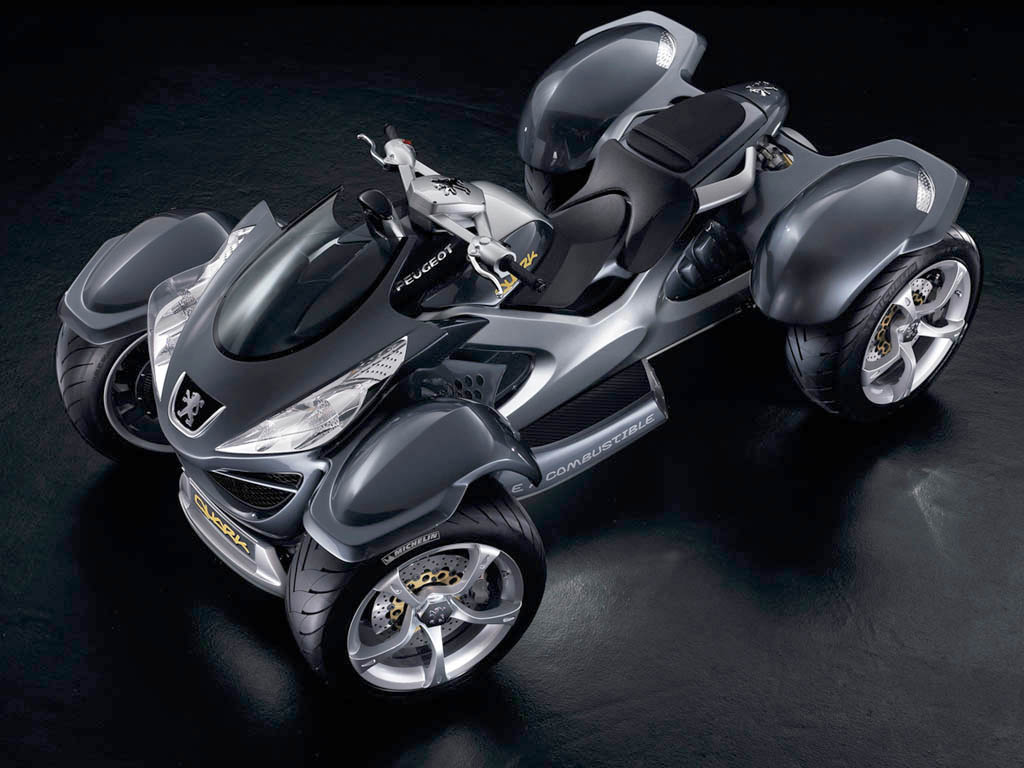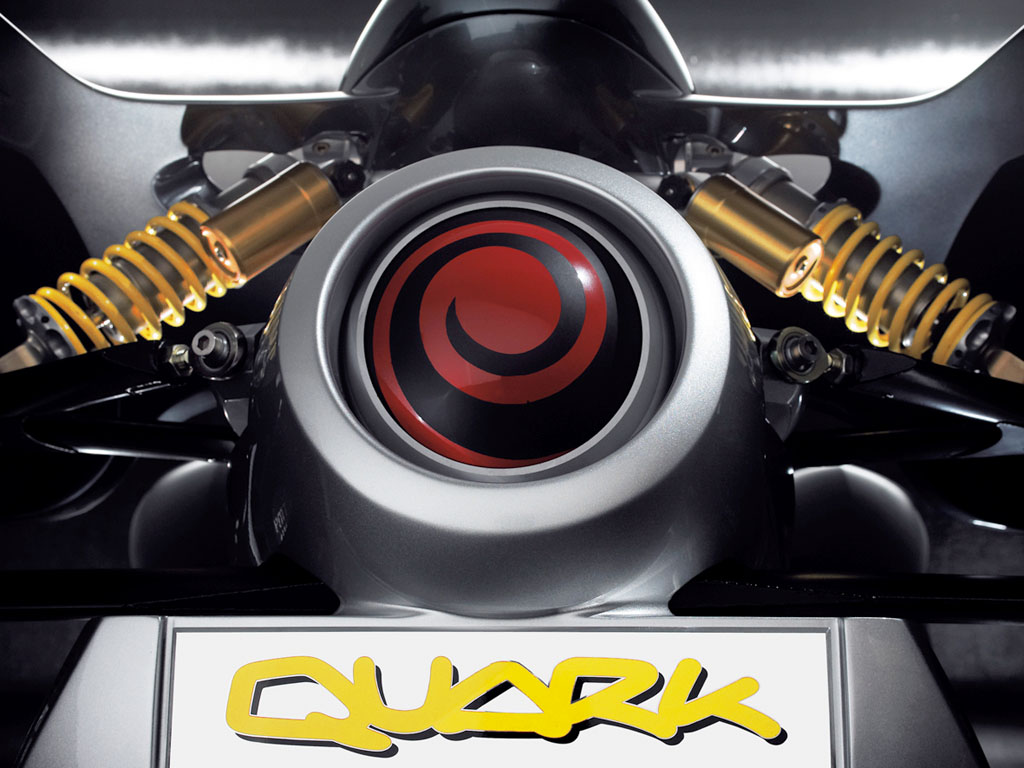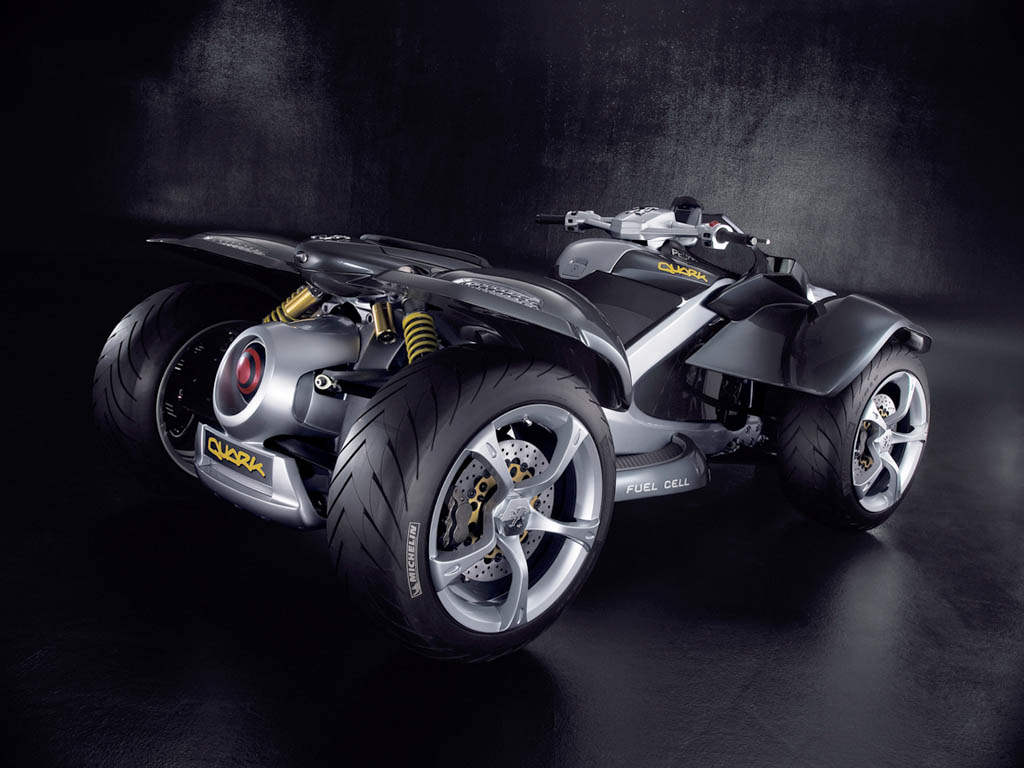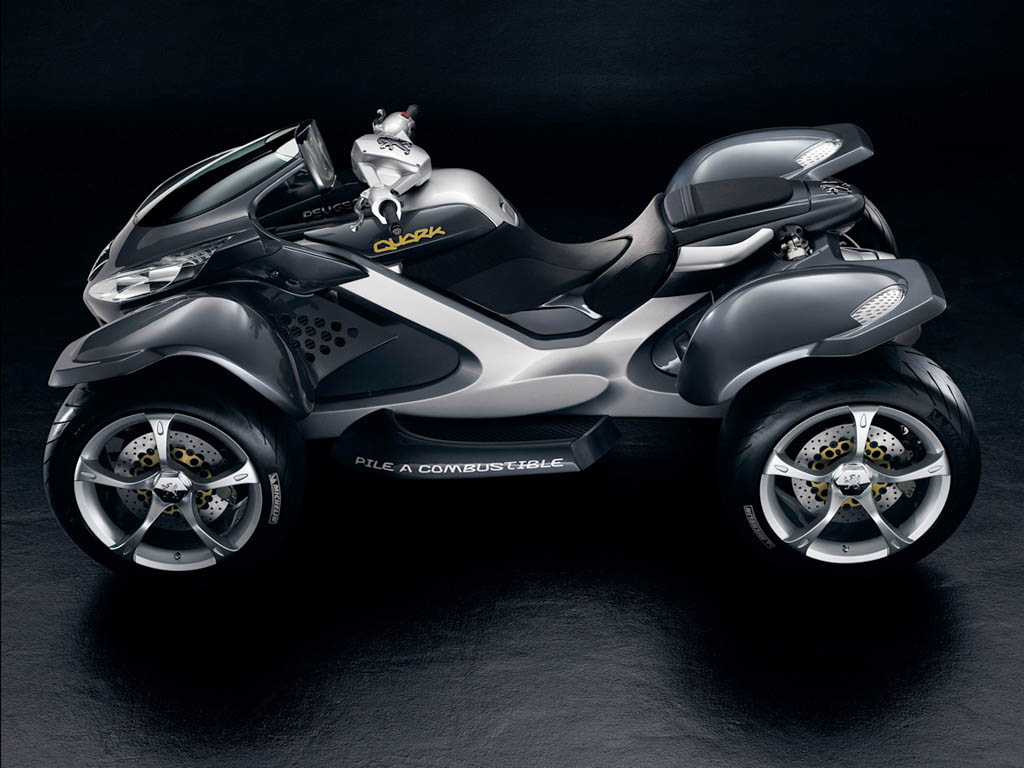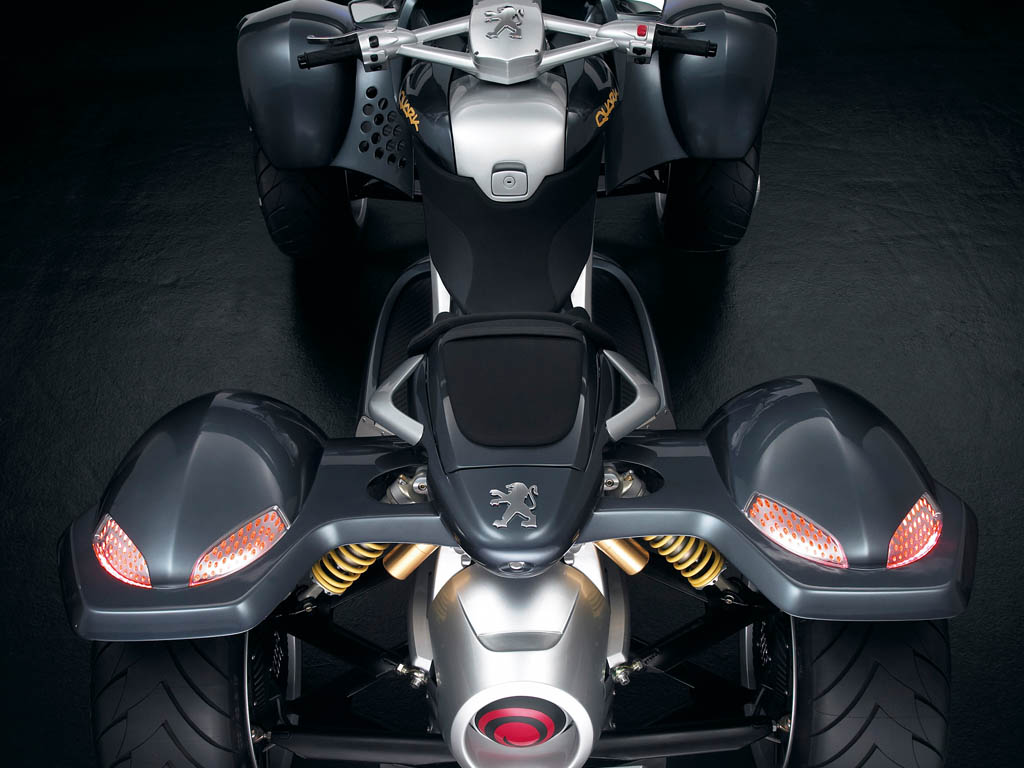2004 Peugeot Quark Concept
The Quark
Research into the fuel cell continues at a brisk pace. After the Peugeot Fuel Cell Taxi and the H2O, new developments have lead to the miniaturisation and simplification of this technology, while still providing a practical range. To mark these developments, Peugeot has chosen to create an original concept vehicle to demonstrate this new technology: the Quark.
The Quark is a two-seater, four-wheel drive vehicle that uses four electric motors and hydrogen fuel cells in its powertrain. Although there is minimal bodywork, the body reveals at a glance that the Quark is a Peugeot vehicle. From the design of the dual LED headlamps and its Lion badge, to the assertive but welcoming front grille, the overall impression is that of a futuristic, but also a realistic vehicle.
The front bodywork serves as a windshield to protect the passengers, who also have dedicated storage spaces at their disposal. At the rear, the hydrogen tank is painted red to symbolise its contents.
An electric motor drives each of the four wheels, themselves connected to the chassis by means of triangular wishbones. The 17” diameter wheels create a real sense of latent power.
Hydrogen Fuel Cells
It is in town that the main qualities of the fuel cell – noiseless operation and absence of pollution at the point of use – are most relevant. In addition, when used in and around town, i.e. in driving conditions that involve frequent deceleration phases, it is possible to use the vehicle’s electric traction motors for braking, thereby recovering energy expended during deceleration at no cost and reducing the vehicle’s overall fuel consumption.
In parallel, PSA Peugeot Citroën have also developed new solutions to simplify the fuel cell and reduce its size to help integration into more compact vehicles. Firstly, the fuel cell of the Quark is no longer water-cooled, but air-cooled. This avoids the need for a bulky water-cooling system and frees up space accordingly.
The Quark uses a 9-litre hydrogen tank at a pressure of 700 bars. Over a complete cycle, the vehicle’s range is around 100 km (up to 130 km in economy mode). In addition, like the Fuel Cell Taxi, the Quark has a simple and rapid method of refilling the vehicle with hydrogen, with a plug & drive system that makes it easy to replace an empty bottle with a full one.
Powertrain
The Quark power train is innovative. Electrical power supplied by the batteries and the fuel cell is transmitted, not to a central motor, but to four individual electric motors located in each of the vehicle’s wheels. Each motor provides a maximum torque of 100 Nm, a continuous output of 2.5 kW and a maximum output of 7 kW. Thanks to its four individual motors, the Quark therefore has a maximum power of 295 ft lbs (400 Nm) and a maximum continous power of 37.5 bhp (28 kW).
Due to the fitment of four individual motors, the vehicle has permanent four-wheel drive. An electronic control module controls the motors independently. It supplies torque in accordance with the demands requested by the driver (controlled current). This module, combined with all four individual motors, serves the purpose of the differentials on a traditional vehicle. In addition to regenerative braking, the system can accommodate advanced functions (not implemented on the demonstrator) such as ABS, ESP, cornering assistance (at very slow speed) to reduce the turning circle radius by provoking wheel slip.
The braking system combines regenerative electric braking and hydraulically controlled mechanical braking acting on discs. The braking control regulates both braking modes so that electric braking takes priority over hydraulic braking (ensuring deceleration of around 0.3 g), which is beneficial to the energy balance.
Story by Automobiles Peugeot, edited by Supercars.net
In Detail
| submitted by | Richard Owen |
| engine | In Wheel TM4 Electric Engines Powered by MES-DEA Hydrogen Fuel Cell |
| power | 28 kw / 37.5 bhp |
| bhp/weight | 88.24 bhp per tonne |
| torque | 400 nm / 295.0 ft lbs |
| body / frame | Cast Aluminum Chassis w/Carbon Fibre Body Pieces |
| front tires | MICHELIN 235/45R17 |
| rear tires | MICHELIN 235/45R17 |
| f brake size | mm / in |
| r brake size | mm / in |
| f suspension | Double Wishbones |
| r suspension | Double Wishbones |
| curb weight | 425 kg / 937 lbs |
| wheelbase | 1730 mm / 68.1 in |
| front track | 1150 mm / 45.3 in |
| rear track | 1150 mm / 45.3 in |
| length | 2380 mm / 93.7 in |
| width | 1500 mm / 59.1 in |
| height | 1106 mm / 43.5 in |
| gear ratios | :1 |
| top speed | ~110 kph / 68.4 mph |


